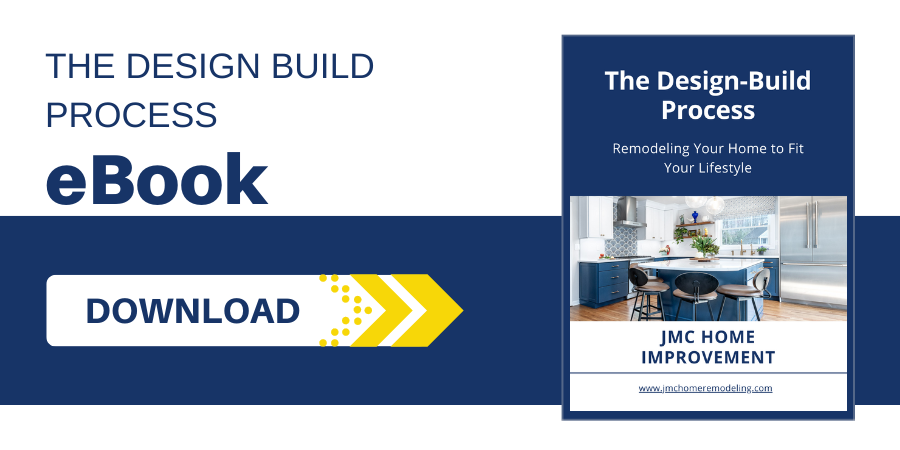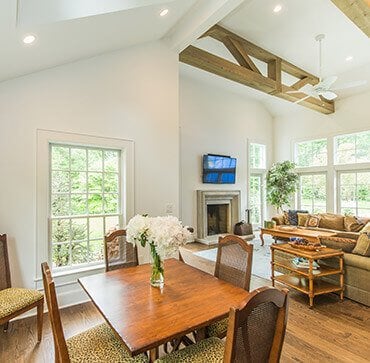Planning a home remodel is an exciting step, but figuring out how to finance home renovations can feel like a challenge.
If you're transforming your kitchen, upgrading your bathroom, adding a primary suite, or building an ADU, there are plenty of home remodeling financing options to make your dream project a reality without breaking the bank.
Let’s dive into some of the best ways to finance home improvements so you can find the right fit for your needs.

Home Remodeling Financing Options
Like hiring a design-build team to design and build your home, financing your home remodel is all about finding the right fit to match your goals, timeline, and budget.
There are a few tried-and-true home remodeling financing options to consider:
1. Home Equity Loans & Home Equity Lines of Credit (HELOC)
If you’ve built up equity in your home, home equity loans and HELOCs can provide an excellent way to fund larger renovations.
-
Home Equity Loans: These loans provide a lump sum upfront, which you repay over a fixed term with consistent monthly payments.
This option works well for projects with a defined budget, such as financing your kitchen remodel or a bathroom renovation. Fixed interest rates ensure predictable payments, helping you stay on track financially.
-
HELOCs: A home equity line of credit acts like a revolving credit account, allowing you to borrow as needed.
This option is especially useful for projects with evolving costs, such as adding a primary suite or making phased upgrades. With HELOCs, you only pay interest on what you borrow. However, variable interest rates can mean changes in your monthly payments over time.
Both options are secured by your home, so they often have lower interest rates than unsecured loans. Additionally, the interest you pay may be tax-deductible if used for home improvements, making these some of the best home remodeling financing options for larger-scale projects.

2. Cash-Out Refinance
A cash-out refinance allows you to replace your existing mortgage with a new one for a higher amount, giving you access to the difference in cash to fund your renovation.
This option provides immediate funds for your project and can even lower your interest rate if the market conditions are favorable. For New Jersey homeowners, cash-out refinancing is a smart and cost-effective way to finance substantial projects, such as a home addition or major kitchen remodel.
Compared to personal loans or credit cards, this method often comes with lower rates, making it one of the best ways to finance home improvements for larger-scale renovations.
One of the advantages of a cash-out refinance is that it allows you to spread payments over the life of your mortgage, resulting in lower monthly costs.
However, since this effectively replaces your current mortgage, you’ll need to consider closing costs and the potential extension of your repayment timeline. Despite these factors, this option remains highly appealing for homeowners planning long-term projects.
3. Personal Loans
If you don’t have enough equity in your home, a personal loan can be a simple and efficient way to fund your renovation.
Unlike home equity loans or HELOCs, personal loans are unsecured, so your home isn’t used as collateral. This makes them a less risky option for homeowners, but it also means higher interest rates due to the lack of security.
Still, personal loans are ideal for mid-sized projects, like a bathroom renovation or kitchen update, where you need a lump sum of cash but want to avoid dipping into your home’s equity.
Most personal loans come with fixed interest rates and predictable monthly payments, giving you clarity and control over your budget. Plus, their faster approval process allows you to begin your project sooner. When exploring home remodeling financing options, it’s wise to compare rates to find the best way to finance home improvements for your needs.

4. Credit Cards
For smaller projects or quick updates, using a credit card with a 0% introductory APR can be a practical way to finance your remodel.
Many credit cards provide zero-interest home improvement loans for a promotional period, usually lasting 12 to 18 months. This makes them a great option for lower-cost renovations, like updating a guest bedroom or adding finishing touches to a home office. By paying off the balance before the promotional period ends, you can avoid additional interest and keep costs under control.
However, credit cards are typically not ideal for larger projects due to their higher interest rates once the promotional period expires. When evaluating home remodeling financing options, consider credit cards for small-scale updates rather than extensive renovations.
5. FHA 203(k) Loans
An FHA 203(k) loan is a government-backed mortgage that helps homeowners finance both the purchase of a property and the cost of renovations. While often used for buying and fixing up a new home, it’s also an excellent choice for significant renovations on your current home, such as a kitchen expansion or a full home remodel.
These loans combine the costs of buying and renovating into a single mortgage, offering a streamlined solution for homeowners in need of substantial financial support for larger projects.
One of the biggest advantages is the low down payment requirement and more lenient credit standards, making it a more accessible option for many.
However, the process can be more complex than traditional loans, so it’s essential to work with a lender experienced in government loans for remodeling homes to ensure the process goes smoothly.
6. Savings or Cash
For homeowners who want to avoid debt, saving up for your remodel is a dependable and straightforward option.
Whether you’re upgrading your outdoor living space, remodeling your kitchen, or adding a bathroom, paying with cash offers full control over your budget without the stress of monthly payments or interest. While it may take longer to save, this approach eliminates financial risks, making it a great choice for those who prefer to carefully manage their finances.
By paying upfront, you can sidestep rising loan rates and refinancing costs. For smaller projects or upgrades, using savings is often the easiest way to ensure your renovation stays on budget and can be completed at your own pace.

What’s the Best Way to Finance Home Improvements?
Choosing the best way to finance home improvements depends on a variety of factors:
- How much equity you have in your home
- The amount you need to borrow
- Your current financial situation
- Your long-term goals
For large-scale projects, like a home addition or a kitchen expansion, borrowing against your home’s equity or refinancing often makes the most sense. For smaller updates, personal loans or even zero-interest home improvement loans via credit cards may be all you need.
The Best Way to Finance a Large Remodeling Project
Building an ADU, a large home addition, or remodeling your entire home is a big undertaking, but there are multiple ways to make it more accessible.
Options like a home equity loan, cash-out refinance, or FHA 203(k) loan are excellent for these larger investments.
They allow you to borrow significant funds with more favorable terms, keeping your payments manageable. If you’re wondering how to finance home renovations for major projects, these methods provide the flexibility and support you need to get started.

FAQ: Home Remodeling Financing
We know you want to feel completely confident when planning for a remodel, so we've collected some of the most frequently asked questions to help you start the process.
What credit score do you need for remodeling?
Most lenders require a credit score of at least 620 for remodeling loans, though higher scores may qualify you for better interest rates. Government-backed loans, like FHA 203(k), may have more lenient credit requirements, making them a good option for homeowners with lower scores.
What is the 30 rule of home renovation?
The 30 rule suggests allocating no more than 30% of your home's value to renovations to avoid over-improving your property. This ensures you stay within a budget that aligns with your home's market potential while still making meaningful upgrades. However, there are always exceptions to the rules.
What is the average length of a home improvement loan?
Home improvement loans typically have repayment terms ranging from 1 to 15 years, depending on the loan type and amount. Shorter terms often have higher monthly payments but lower overall interest costs, while longer terms provide more manageable payments over time.
Are renovation loans a good idea?
Renovation loans can be an excellent choice for financing large projects, especially if you lack sufficient savings. They allow you to improve your home without depleting your cash reserves and may even increase your property’s value, making them a worthwhile investment when used wisely.
Have More Questions? We Can Help!
At JMC Home Improvement Specialists, we know that navigating home remodeling financing options can feel overwhelming, but we’re here to make it easier.
Whether you’re remodeling your kitchen, upgrading a bathroom, or planning an outdoor living space, we’ll help you find a financing solution that fits your goals and your budget.
With the right plan in place, your dream renovation is closer than you think. Let’s talk about how to finance a remodel and turn your vision into a reality.
Contact JMC today to learn more about your financing options!











